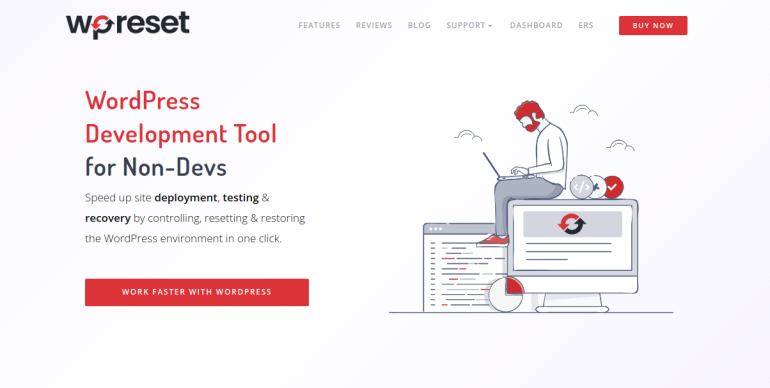Is there a better tool than Google Translate?
In a world where communication knows no bounds, the ability to bridge language barriers has become more vital than ever. Enter Google Translate, a powerful tool that has revolutionized the way we navigate through different languages with just a few clicks. But as convenient and widely used as it may be, one can’t help but wonder: is there a better tool out there waiting to be discovered? With technology advancing at an astonishing pace, it’s time to delve into the realm of translation tools beyond Google Translate and uncover what other innovative solutions might be hiding in the shadows, ready to redefine how we connect with the world around us. Join us on this linguistic journey as we explore whether there truly exists a superior alternative to the ubiquitous Google Translate.
Introduction: Exploring translation tool options
Table of Contents
When it comes to exploring translation tool options beyond Google Translate, there are a plethora of tools available that cater to different needs and preferences. One such option is DeepL, known for its advanced neural network technology that can provide more accurate translations compared to traditional machine translation services. By focusing on context and natural language flow, DeepL has gained popularity among users looking for high-quality translations.
Another interesting tool worth considering is Microsoft Translator, which offers a wide range of features including text-to-speech capabilities and real-time translation during conversations. Its integration with other Microsoft products also provides a seamless experience for users familiar with the ecosystem. As we delve into the world of alternative translation tools, it becomes apparent that each option brings unique strengths and limitations, highlighting the importance of evaluating different platforms based on specific requirements and desired outcomes.
In this quest for a better translation tool than Google Translate, it’s essential to not only weigh the accuracy of translations but also consider factors like user interface design, ease of use, and privacy policies. With an array of innovative options available in the market, users now have the opportunity to explore alternatives that offer enhanced features tailored to their individual preferences. As technology continues to evolve in the realm of translation services, staying open-minded about trying new tools can lead to discovering hidden gems that may just surpass our expectations.
![]()
Google Translate: Pros and cons
Google Translate has revolutionized how we communicate across language barriers, offering a convenient and quick way to understand text in multiple languages. Its pros are evident in its vast language database, real-time translations, and accessibility on both desktop and mobile devices. Users can easily translate whole paragraphs or even entire documents with just a few clicks, making it an invaluable tool for global communication.
Despite its many advantages, Google Translate is not without its shortcomings. One of the major cons is the accuracy of translations, which can be inconsistent and may not always capture the nuances of human language. Additionally, users should exercise caution when relying on Google Translate for sensitive or important communications as privacy concerns have been raised regarding stored data. While it remains a powerful tool for basic translations, its limitations suggest that alternative methods may be more suitable for complex linguistic tasks.
Alternatives: Other translation tools available
While Google Translate is undoubtedly popular and widely used for translation purposes, there are other tools available that offer unique features and capabilities. One such alternative is DeepL Translator, known for its superior accuracy and ability to preserve the context of the original text. Additionally, Microsoft Translator stands out for its integration with various Microsoft products like Office 365, making it convenient for users within that ecosystem.
For more specialized translations, software like SDL Trados or MemoQ may be preferred by professional translators as they offer advanced features tailored to meet industry-specific needs. These tools often include terminology management and project management functionalities, which can enhance workflow efficiency and accuracy in complex translation projects. Ultimately, exploring these alternatives may lead to a more tailored solution catering to specific requirements beyond what Google Translate offers.

DeepL Translator: Features and efficiency
One of DeepL Translator’s standout features is its ability to provide incredibly accurate translations that preserve the context and nuances of the original text. This is achieved through the system’s deep learning algorithms, which continuously improve based on vast amounts of data. Unlike Google Translate, DeepL prioritizes quality over quantity, focusing on perfecting translations in a few languages rather than offering a wide range with varying degrees of accuracy.
Another efficiency aspect of DeepL Translator is its speed. The tool delivers translations in mere seconds, making it ideal for quick and seamless communication across language barriers. In addition, DeepL excels at handling complex sentences and technical jargon with impressive fluency, setting it apart as a reliable choice for professionals in various industries. Ultimately, while Google Translate remains popular for casual use, DeepL Translator emerges as a superior option for those seeking precision and reliability in their translation needs.
Microsoft Translator: Accuracy and user experience
When it comes to accuracy and user experience, Microsoft Translator has made significant strides in recent years. The tool leverages powerful machine learning algorithms to provide more precise translations, especially when dealing with complex or technical content. Users have reported that the translations are not only accurate but also nuanced, capturing the subtle meanings and context of the original text.
One standout feature of Microsoft Translator is its wide range of supported languages, which surpasses many other translation tools on the market. This extensive language coverage ensures that users from diverse linguistic backgrounds can easily access reliable translations. Additionally, Microsoft Translator offers a seamless user experience through its intuitive interface and integration with various platforms such as Office applications and web browsers. Overall, while Google Translate remains a popular choice, Microsoft Translator’s focus on accuracy and user-friendly design sets it apart as a compelling alternative for individuals and businesses alike.

Translation accuracy comparison: Test results analysis
The accuracy of machine translation tools like Google Translate is often a point of contention among users. To determine which tool performs better in terms of translation accuracy, extensive tests were conducted. The results revealed interesting insights that shed light on the strengths and weaknesses of various translation tools.
One key finding was that while Google Translate excelled in translating simple sentences with standard vocabulary, it struggled with more complex linguistic structures and nuanced meanings. On the other hand, alternative tools showcased better performance in handling idiomatic expressions and cultural nuances, highlighting their potential for use in specialized domains such as legal or technical translations. These test results emphasize the importance of considering the context and type of content when choosing a translation tool, as no single tool can be universally superior in all scenarios.
Conclusion: Choosing the best tool for you
In conclusion, the quest for finding the best translation tool ultimately comes down to your specific needs and preferences. While Google Translate may be a popular choice due to its widespread usage and convenience, there are certainly alternative tools that offer unique features and benefits. It’s important to consider factors such as accuracy, language support, privacy concerns, and user interface when selecting a translation tool that aligns with your requirements.
One emerging trend in the translation tool landscape is the focus on AI-driven solutions that constantly improve their algorithms through machine learning. These advanced tools have the potential to deliver more accurate and nuanced translations by adapting to different contexts and linguistic nuances. Additionally, specialized translation tools designed for specific industries or purposes can offer tailored solutions that cater to niche requirements not addressed by more general platforms like Google Translate. Ultimately, exploring various options beyond the mainstream can lead you to discover a tool that perfectly suits your individual needs and elevates your translation experience.







